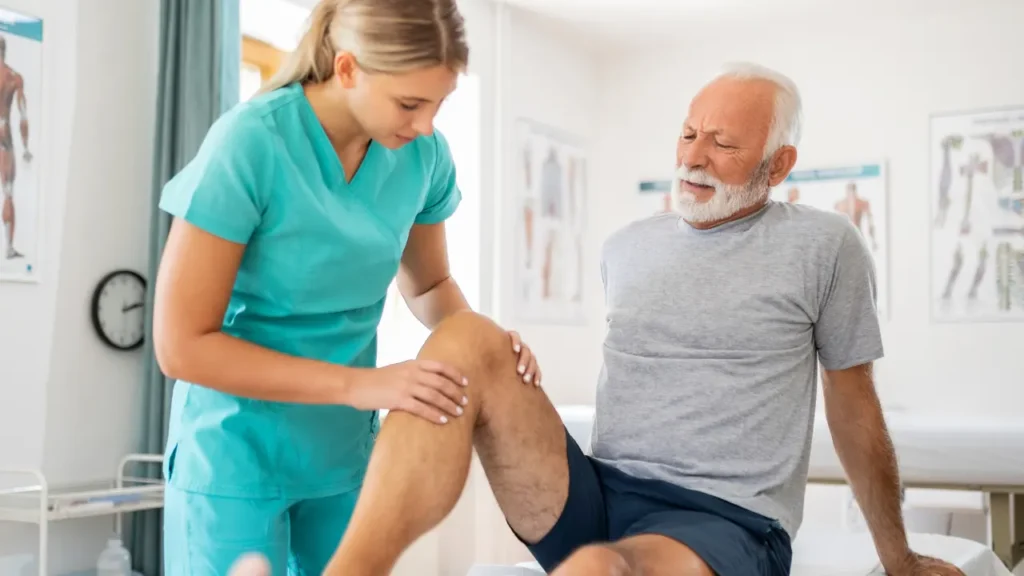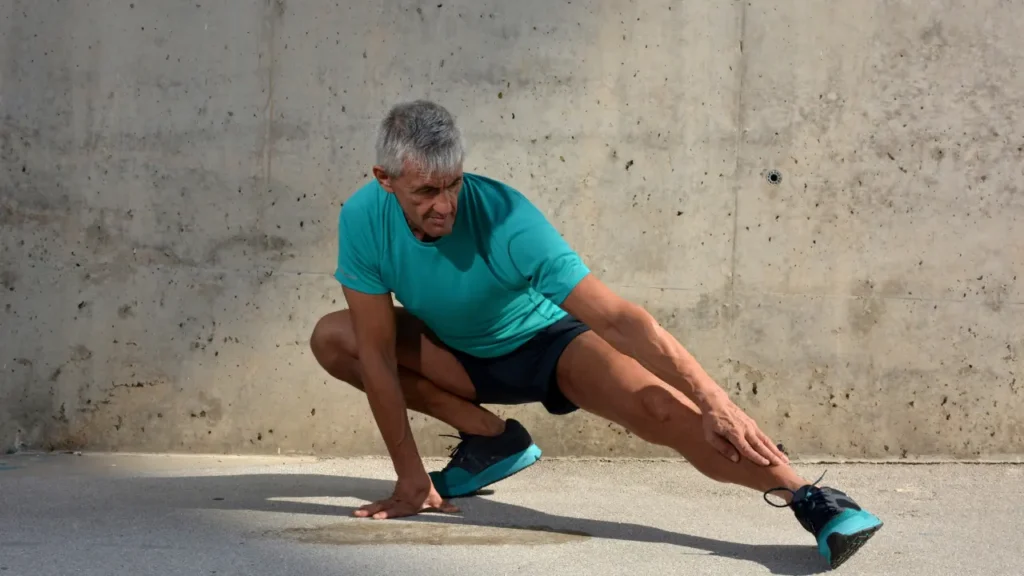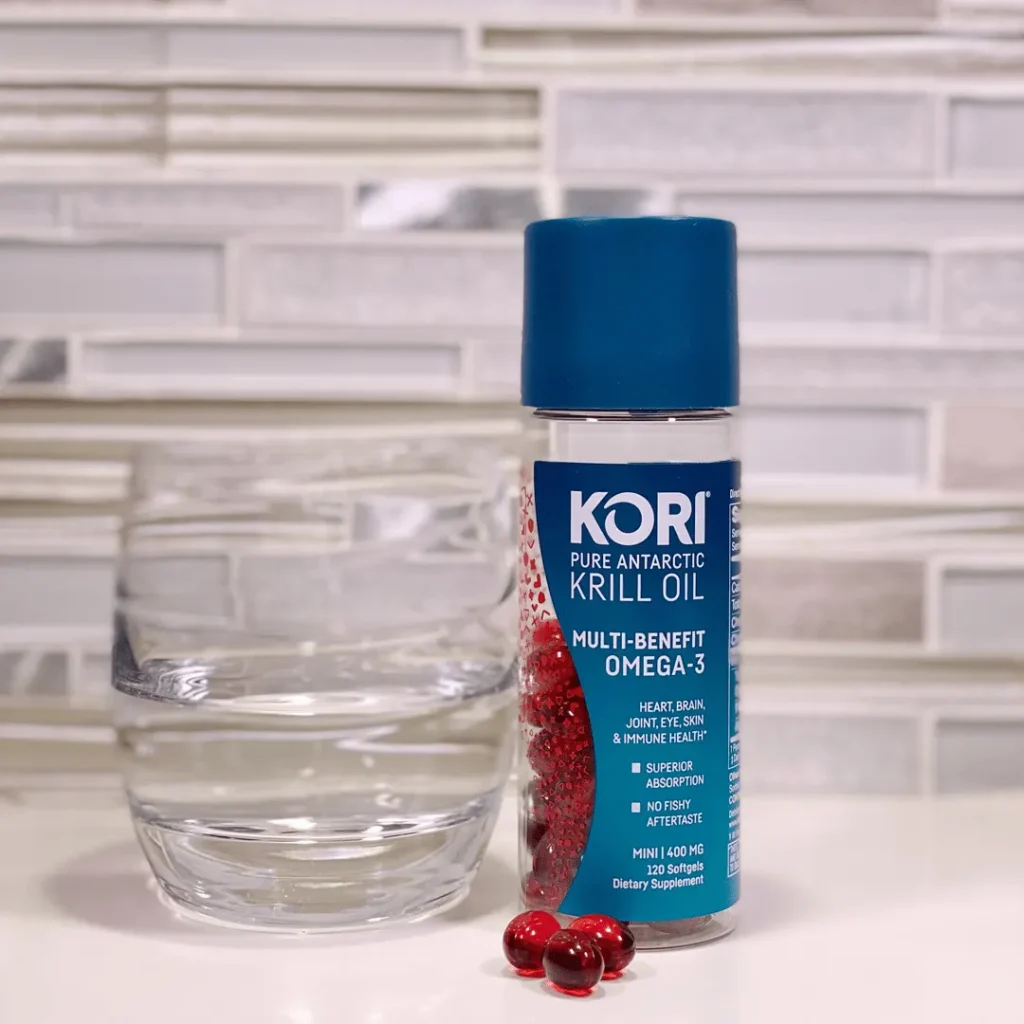With the average human lifespan varying between 75 and 80 years old, it’s clear that people are living longer than ever before. What’s more, recent studies show that this number is increasing worldwide, a feat largely due to advancements in modern health technology. That said, this age increase, while remarkable on the surface, could be seen as a mixed blessing when you factor in the chronic challenges that come with longevity. These challenges may include a decreased amount of energy, an increased susceptibility to sicknesses, and — perhaps most infamously — the presence of joint pain. This is especially true of knee pain, as these joints bear the brunt of many years of standing and moving, as well as serving as one of the body’s primary means of support.
Ironically, embracing a modern sedentary lifestyle has been discovered to be every bit as damaging for your knees as overworking them, likely due to the fact that they weaken and experience atrophy from lack of use. Whether it’s due to aging, overuse, or an injury, knee discomfort can significantly impact your daily life. Fortunately, there are natural ways to alleviate knee aches and promote joint health, one of which encourages the use of stretching. In this article, we will explore the benefits of incorporating stretches for knee pain into your routine, along with insights into joint health and the importance of stretching.
You May Also Like:
Mastering Gravity With OMORPHO: Weight Vest Workouts For Ultimate Fitness
Stretches for knee pain: the importance of joint health
Maintaining optimal joint health is a critical aspect of overall musculoskeletal well-being, influencing an individual’s ability to move freely and engage in daily activities. Joints serve as pivotal connections between bones, enabling a wide range of motions while ensuring stability and support. The health of these complex structures is contingent on the interplay of various components, including bones, cartilage, ligaments, tendons, and synovial fluid. Each element plays a specific role in promoting joint functionality and preventing the onset of debilitating conditions.
At the heart of joint health lies the cartilage, a firm yet flexible connective tissue that covers the ends of bones within the joint. Cartilage acts as a cushion, absorbing shock and facilitating smooth movements. In conditions such as osteoarthritis, the gradual deterioration of cartilage disrupts this delicate balance, leading to pain, stiffness, and diminished joint function. Ligaments and tendons, on the other hand, provide structural support by connecting bones and muscles around the joint. Maintaining the integrity of these connective tissues is paramount for stability and the prevention of injuries.
Synovial fluid, a lubricating substance within the joint, further contributes to joint health by reducing friction during movement. A deficiency or alteration in the composition of synovial fluid can compromise joint lubrication, resulting in increased wear and tear. Recognizing the intricate interdependence of these components underscores the importance of adopting measures to safeguard joint health.

Stretches for knee pain: understanding the issue
Knee pain is a prevalent issue affecting individuals across various age groups and lifestyles. To comprehend the intricacies of knee discomfort, it is critical to delve into the anatomy of the knee joint.
The knee is a hinge joint formed by the femur, tibia, and patella, where ligaments, tendons, and cartilage work in tandem to facilitate movement. One of the primary contributors to knee pain is osteoarthritis, a degenerative condition characterized by the gradual breakdown of the joint’s protective cartilage. As the cartilage diminishes, bones may rub against each other, resulting in inflammation, stiffness, and pain. Moreover, tendinitis, the inflammation of tendons surrounding the knee, and ligament injuries such as anterior cruciate ligament (ACL) tears, can also instigate knee discomfort, often exacerbated by physical activities or traumatic incidents.
The prevalence of knee pain is further compounded by factors such as aging, sedentary lifestyles, and repetitive stress on the joints. Aging contributes to the natural wear and tear of the knee joint, making it more susceptible to conditions like osteoarthritis. Sedentary habits and prolonged periods of sitting weaken the muscles that support the knee, diminishing their ability to provide adequate joint stability. Additionally, individuals engaged in activities that exert excessive strain on the knee, such as running or high-impact sports, may experience heightened susceptibility to injuries. Understanding the multifaceted nature of knee pain is paramount for devising comprehensive strategies to manage and alleviate discomfort effectively.

Stretches for knee pain: the role of stretching in joint health
Stretching constitutes a fundamental component of musculoskeletal care, playing a pivotal role in promoting flexibility, mobility, and overall joint health. The primary objective of stretching exercises is to enhance the extensibility of muscles, tendons, and ligaments, fostering a broader range of motion and mitigating the risk of musculoskeletal injuries.
Dynamic stretches, involving controlled and deliberate movements, are particularly effective in preparing the body for physical activities by increasing blood flow to targeted muscle groups. This pre-activity stretching routine helps optimize muscle function and minimizes the likelihood of strains and sprains. On the other hand, static stretching, characterized by holding a position for an extended duration, is instrumental in improving overall flexibility and relieving muscle tightness. By elongating muscles and connective tissues, static stretches contribute to improving joint mobility and posture.
When specifically addressing knee pain, incorporating stretches for knee pain that target the quadriceps, hamstrings, calves, and iliotibial (IT) bands can alleviate tension and enhance the supporting musculature around the knee joint. However, it is imperative to approach stretching with caution, ensuring proper technique and avoiding excessive force, which may lead to injury. The integration of stretching into a comprehensive exercise routine not only primes the body for physical activities but also aids in the recovery process by reducing muscle soreness and enhancing joint resilience.
Stretches for knee pain: the best for knee pain
Quadriceps Stretch Variation: Seated Quadriceps Stretch
While standing quadriceps stretches are effective, a seated variation offers a different angle to target the front thigh muscles. Sit on the floor with your legs extended in front of you. Bend one knee and bring the foot toward your buttocks. Gently press the bent knee toward the floor, feeling a stretch in the quadriceps of the extended leg. Hold the stretch for 15-30 seconds and switch to the other leg.
Hamstring Stretch Variation: Standing Hamstring Stretch
Stand with your feet hip-width apart. Hinge at your hips and lean forward, reaching toward your toes. Keep your back straight and engage your core. Hold the stretch for 15-30 seconds, feeling the stretch in your hamstrings. If you have balance concerns, you can perform this stretch seated on the edge of a chair or a sturdy surface.
Calf Stretch Variation: Towel Calf Stretch
Sit on the floor with your legs extended. Loop a towel around the ball of one foot and gently pull the towel toward you while keeping the knee straight. Feel the stretch in your calf muscles. Hold for 15-30 seconds and switch to the other leg. This stretch provides a controlled and customizable way to target the calf muscles.
IT Band Stretch Variation: Side-Lying IT Band Stretch
Lie on your side with the affected leg on the bottom. Cross the top leg over and let it hang down toward the floor. Feel the stretch along the outer thigh and hip. Hold for 15-30 seconds and switch to the other side. This variation provides a more isolated stretch for the IT band.
Dynamic Knee Flexor Stretch: Leg Swings
Stand next to a sturdy support, such as a wall or a railing. Swing one leg forward and backward in a controlled motion, keeping it straight. Perform 10-15 swings and then switch to the other leg. This dynamic stretch helps improve flexibility in the knee flexors and enhances blood flow to the muscles around the knee joint.
Dynamic Knee Extensor Stretch: High Knee March
Stand with feet hip-width apart. Lift one knee toward your chest, holding it for a moment before lowering it. Alternate between legs, marching in place. This dynamic stretch engages the knee extensor muscles, promoting flexibility and warming up the joints before engaging in physical activities.
Remember to perform these stretches gently and smoothly, avoiding any sudden or jerky movements. If you have pre-existing knee conditions or concerns, consult with a healthcare professional or a physical therapist before incorporating these stretches into your routine.

Stretches for knee pain: the potential role of omega-3 fatty acids
In addition to stretching, certain supplemental nutrients have shown potential benefits for maintaining knee joint health. One such nutrient is omega-3 fatty acids, which have gained attention within the realm of joint health due to their recognized anti-inflammatory properties and potential to alleviate knee pain and discomfort associated with conditions like osteoarthritis.
Omega-3 fatty acids, particularly eicosapentaenoic acid (EPA) and docosahexaenoic acid (DHA), play a crucial role in modulating inflammatory processes in the body. These essential fatty acids are known for their ability to reduce the production of pro-inflammatory cytokines, such as interleukin-1 beta (IL-1β) and tumor necrosis factor-alpha (TNF-α), which are linked to joint inflammation and pain. By reducing inflammation, omega-3s may help relieve symptoms of knee osteoarthritis, including pain, stiffness, and swelling.
Moreover, omega-3 fatty acids possess antioxidant properties that contribute to joint health. They play a crucial role in neutralizing harmful free radicals in the body, thus protecting joint tissues from oxidative damage. This antioxidant effect is particularly beneficial for slowing down the progression of degenerative joint conditions like osteoarthritis, where oxidative stress plays a significant role in tissue deterioration.
Supplement products like Kori Pure Antarctic Krill Oil stand out as a holistic aid for joint health, incorporating omega-3 fatty acids, including EPA and DHA, into their formula. The unique phospholipid structure of krill oil inherently allows for better absorption of omega-3s, ensuring that the body receives the maximum benefits of these essential fatty acids. This enhanced bioavailability distinguishes krill oil from traditional fish oil supplements, providing users with a more efficient and effective means of obtaining the desired omega-3 benefits.
Beyond the evident joint benefits, Kori Pure Antarctic Krill Oil prioritizes purity and sustainability. Sourced from krill obtained from the pristine waters of the Antarctic, these products ensure a clean source of omega-3s, minimizing the risk of contaminants often associated with fish oil. The inclusion of omega-3 fatty acids underscores a commitment to natural interventions, emphasizing the importance of these essential nutrients in joint wellness. With a focus on ingredient purity, sustainability, and the combined efficacy of omega-3s and other beneficial compounds, Kori Pure Antarctic Krill Oil exemplifies a comprehensive and conscientious approach to supporting joint health.
The sustainable harvesting practices employed in Kori Pure Antarctic Krill Oil production align with an environmentally conscious approach. The brand emphasizes sustainable harvesting practices to ensure the continued health of krill populations in the pristine Antarctic waters. In fact, its supplier is the only fishery in the world that has earned an “A” rating for seven years running. Such practices offer consumers a supplement that not only promotes joint health but also reflects a commitment to planetary well-being.
Nonetheless, it is important to note that health supplements are not FDA-approved; they cannot diagnose, treat, or cure any disease or health condition. Supplements should be used only as an adjunct to conventional treatment under the supervision of a healthcare professional.

Stretches for knee pain: other ways to support joint health
While particular stretching exercises and supplements are beneficial for your knee joints, adopting a holistic approach involves the consideration of other lifestyle factors and dietary choices. One crucial element in this holistic strategy is weight management. Excess body weight exerts additional stress on weight-bearing joints, such as the knees, contributing to the development and progression of joint-related conditions. Individuals with obesity are at an increased risk of osteoarthritis, particularly in the knees and hips. Adopting a well-rounded diet coupled with effective training methods is foundational for preserving joint integrity and reducing the burden on weight-bearing joints.
Physical activity, when approached mindfully, also plays a role in supporting joint health. Regular, moderate-intensity exercise enhances muscle strength, flexibility, and overall joint function. It also aids in weight management and mitigating the risk of developing chronic conditions associated with joint discomfort. Additionally, proper hydration is integral to joint function and overall musculoskeletal health. The cartilage within joints, which acts as a cushion and facilitates smooth movement, relies on an adequate supply of water for optimal functioning. Dehydration can compromise the lubrication and shock-absorbing properties of synovial fluid, increasing the risk of joint friction and discomfort. Ensuring sufficient daily water intake, complemented by a diet rich in hydrating foods, supports the maintenance of joint health.
Stretches for knee pain: Joint health is holistic health
Joints are an important aspect of bodily health, and the best time to begin caring for their well-being is right now. By incorporating stretches for knee pain into your daily routine, you commit to a natural and effective way of easing discomfort and promoting joint health. Combining these exercises with the potential benefits of omega-3 fatty acids can empower individuals to take proactive steps toward a pain-free and active life. Of course, taking additional measures such as adding dairy and soy-based foods to your diet, as well as incorporating strength training exercises to condition and fortify your knees, would further benefit your joints and increase your overall quality of life. By incorporating these measures and prioritizing your joint health, you’re investing in a future of mobility and well-being.

Additional Reading:
Mayo Clinic: Osteoarthritis — Symptoms and Causes
Everyday: Can Too Much Exercise Wear out Your Joints?
VeryWell Health: Can Acupuncture Help Arthritis Pain?
Cleveland Clinic: 6 Foods To Eat for Healthy Joints
Health Central: Pros and Cons of Knee Surgery for Osteoarthritis
Important Note: The information contained in this article is for general informational purposes only, and should not be construed as health or medical advice, nor is it intended to diagnose, prevent, treat, or cure any disease or health condition. Before embarking on any diet, fitness regimen, or program of nutritional supplementation, it is advisable to consult your healthcare professional in order to determine its safety and probable efficacy in terms of your individual state of health.
Regarding Nutritional Supplements Or Other Non-Prescription Health Products: If any nutritional supplements or other non-prescription health products are mentioned in the foregoing article, any claims or statements made about them have not been evaluated by the U.S. Food and Drug Administration, and such nutritional supplements or other health products are not intended to diagnose, treat, cure, or prevent any disease.

